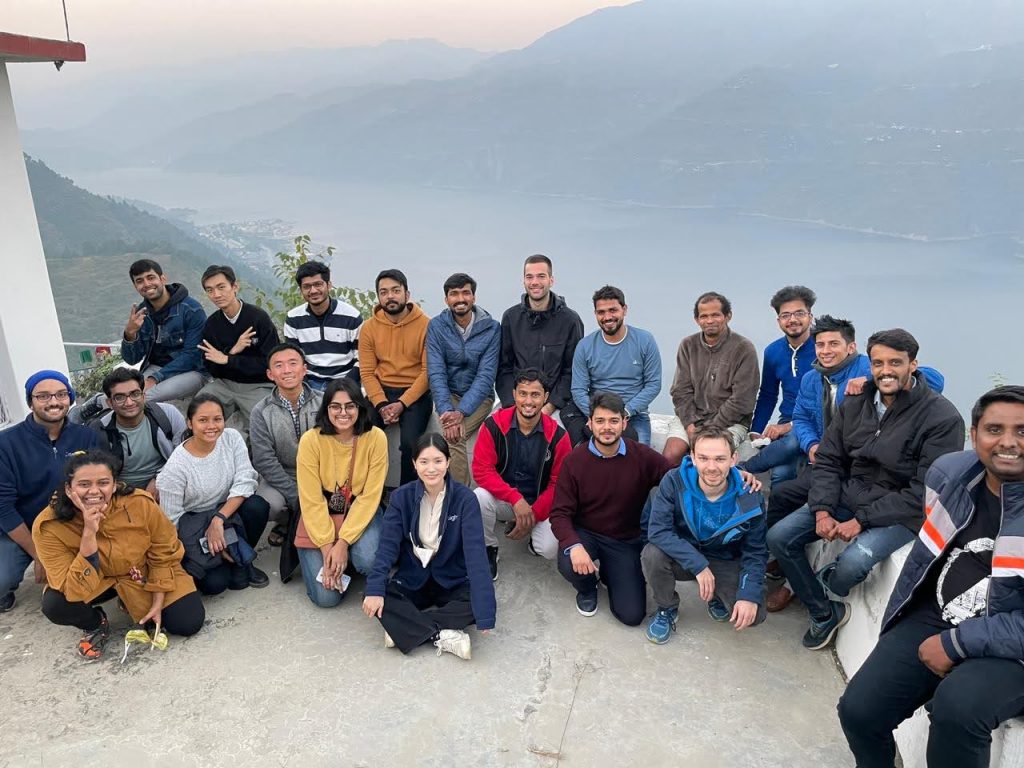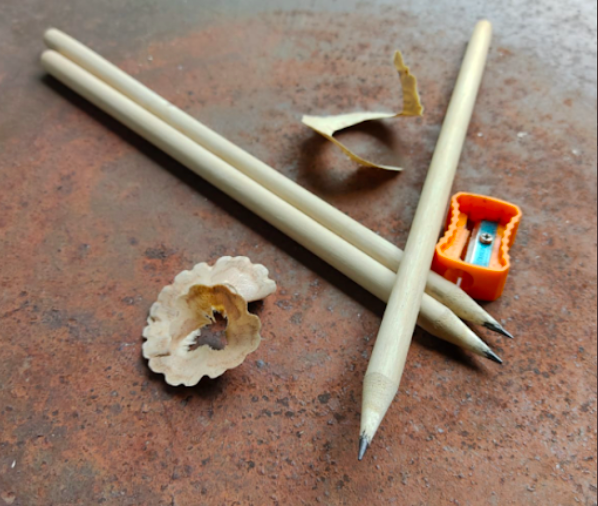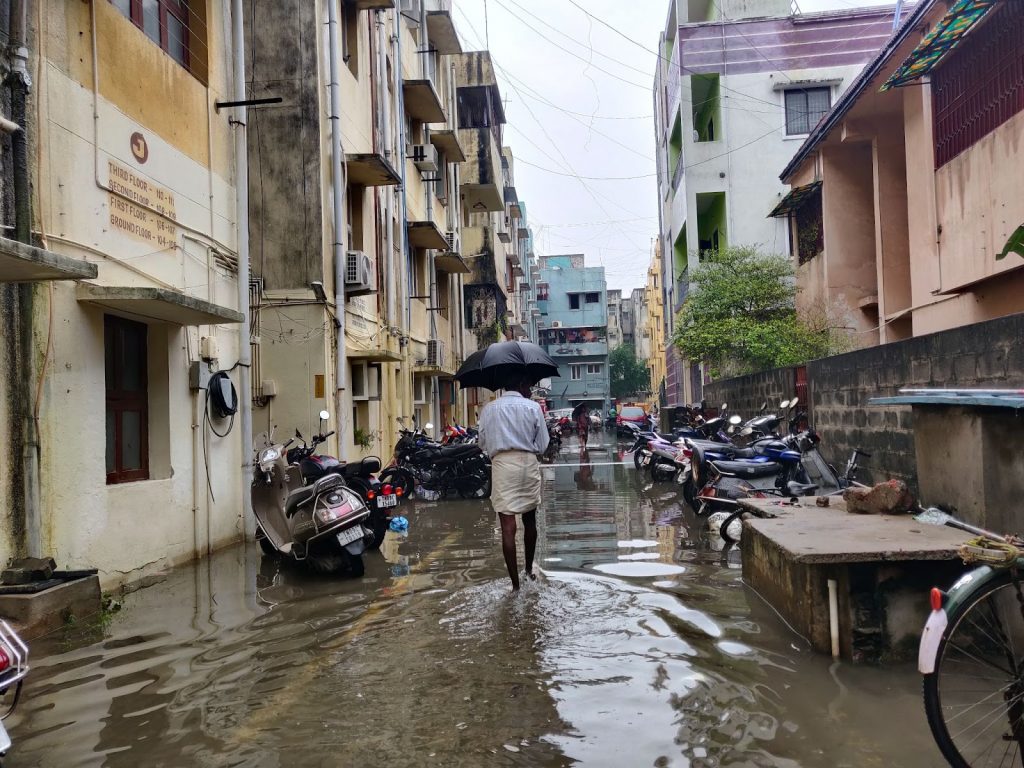ڀنڀوري
(Sindhi: Bhimbhori; Dragonfly)
Migrations make for spellbinding stories and compelling heroes. November started with a bird setting the record for the longest recorded flight by a land bird. An Eastern bar-tailed godwit, identified as 4BYWW, journeyed from Alaska to New Zealand, covering a distance of 12,200km, flying for more than eight days straight! Her fellow godwit,
4BWRB, also had an incredible flight. This male had failed to make the journey on three earlier occasions. His fourth attempt appeared to be just as jinxed. After 57 hours of constant flying, 4BWRB had to make a U-turn to return to his starting point in Alaska. He took off yet again, and made it to New Zealand! Epic, right?
Now, meet the globe skimmer dragonfly, an insect that’s 5cm long, weighs less than a single Parle-G biscuit and crosses the Indian ocean. Y-e-s, the Indian Ocean. Let this sink in while you listen to this six-minute podcast, in which Dr Sam Illingworth explains the science with a poetic ode to these magical, delicately winged creatures that chomp on mosquitoes in-flight. We love Michael Phelps, but there are other heroes to pay attention to.
Rainmatter on the road
Much of the team was on the move in November. We met and learnt from people immersed in multiple spheres, including in policy (Centre for Science and Environment & Shakti Sustainable Energy Foundation), participatory research (Participatory Research in Asia & Praxis), sustainable agriculture (Aranyaani) and technology (ColoredCow, Dhwani, IDInsight).
It has been inspiring to see the wide spectrum of organisations working to drive local economies and ecological wealth. For instance,
Goonj’s work extends much beyond ensuring clothes and other material surpluses reach those in need. They use clothes as an alternate form of currency to inculcate an attitude in individuals to address their own issues. Instead of providing the clothes as charity, partner organisations work with respective communities to inspire the people to solve problems. Clothes are then given as a barter for this work. They’ve observed this approach builds resilience among the communities even as participatory work has resulted in the cleaning up of lakes, tank bunds being built and common land being used to produce vegetables.

Participants at the Social Impact Sprint at Tehri, Uttarakhand. Photo: ColoredCow
At the Social Impact Sprint in Tehri, Uttarakhand, we debated and discussed the role that software plays in the social impact space even as we heard stories about technology shaping ground efforts. For instance, Shelter Associates uses a combination of satellite data and on-ground community members to track municipal plumbing networks in slums thus helping their vision of getting toilets installed in every house. And (while we feel a tinge of envy), we doff our hats to ColoredCow for demonstrating that a high-performing tech team can operate from the Himalayas!
From the community
Uttarayan shared their experience from a 95-day agroforestry pilot. They conducted a trial with mangoes and the leguminous, black gram crop on a one-acre plot at their nursery in Arambagh, West Bengal. The plot was earlier used only for mangoes. The cultivation of nitrogen-fixing black gram resulted in a 100% profit from the ground crop. The added benefit was that the ground crop reduced erosion of the exposed soil while serving as a shelter for several reptiles, amphibians and insects, which likely provided ecological benefits. Related video here.

Lantana pencils. Photo: CSEI-ATREE
CSEI-ATREE’s designer in residence program has led to a wonderful collaboration between two urban designers and the local, forest-dwelling community. It wasn’t always smooth-sailing, but the designers and the local artisans found an equal working relationship at ATREE’s field station in the MM Hills, and together transformed the wild, invasive species Lantana camara into meaningful objects, such as pencils and furniture.
CSEI-ATREE also launched Jaltol, an open-source digital tool for water accounting. This tool is significant because, despite a number of perennial rivers, India is a water-stressed nation. The tool plugs a gap into how we collect and use data in the water sector to help address water security. You’ll find everything you need to know about Jaltol
here.

Photo: Korah Abraham/Citizen Matters Chennai
Citizen Matters reported extensively on the devastating flooding in Chennai in November: Read their analysis of the city’s maps and how it reveal flaws in the design of stormwater drains in Chennai; how T Nagar residents raised questions over the quality of work on stormwater drains and how basic gaps in governance and disregard for natural infrastructure cause flooding. CM also hosted an online discussion on possible ways to prevent flooding in the city, and a report on recommended steps for a flood-proof Chennai.
Block your calendars
Glific demo: Glific is an open source tool designed for NGOs to leverage WhatsApp for their stakeholder communication. It supports use-cases such as helplines, chatbot or for awareness building. Join the wonderful folks at Glific and Reap Benefit, who have agreed to host a demonstration on Friday, December 10 at 4PM. Reach out to Akshay ([email protected]) if you have questions.
Communication 101: The CSEI-ATREE team has graciously offered to host a Communications 101 workshop for partner non-profits. This workshop will offer small/constrained teams an overview of communication strategy (how will communications help achieve the organisation’s goals? define the communication goal, etc), communication plan (who is your audience? how will you reach this audience?), implementation plan (what will you say to the chosen audience? how will you say this to them? how often will you communicate with them?), templates and contact databases. The workshop will be held on Monday, 17 January 2022. To participate, please fill this form, and we will get in touch.
Noticeboard
📌 Can oysters save a city from flooding? Many in New York believe so.
📌 Watershed Support Services and Activities Network (WASSAN) is hiring people for several positions including for regional coordinator for the Odisha Millet Mission, program coordinators and capacity building coordinators. Check their careers page for deadlines and details.
📌 Wildlife Trust of India is looking for marketing professionals, sociologists, ecologists, human resources, finance and many others. Check out their jobs page for details.
📌 Subscribe to The Flock, a monthly newsletter, if you or friends would like to discover more about birds and nature in India. We were overjoyed when we stumbled upon the feather library of Indian birds via their last edition.
📌 ZeroCircle is on the lookout for a seaweed scientist, coating specialist and a food tech specialist. Details here.
Parting shot
Is There a Santa Claus? An eight-year-old asked this in a letter to a newspaper editor back in 1897. The editor’s reply to the girl, Virginia, was an editorial in the newspaper. A classic from the joyful Letters of Note repository, read Virginia’s letter, the editor’s response and the newspaper clipping.
Until next time, may your roads be auspicious
śubhāste panthānaḥ santu
Team Rainmatter Foundation

